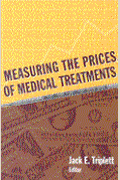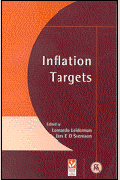What’s the latest thinking in fiscal and monetary policy? The Hutchins Roundup keeps you informed of the latest research, charts, and speeches. Want to receive the Hutchins Roundup as an email? Sign up here to get it in your inbox every Thursday.
Unions and the Phillips curve
Declines in worker bargaining power since the 1980s may have contributed to the weakening of the Phillips curve relationship between inflation and unemployment, find David Ratner and Jae Sim of the Federal Reserve Board. A theoretical model in which trade unions seek to increase their wages and share of production rents through collective bargaining predicts that reduced worker bargaining power leads to a flatter Phillips curve, lower inflation volatility, and a decline in the labor share of income. Estimating their model using U.S. and U.K. data, the authors find that worker bargaining power declined significantly in the post-Reagan and post-Thatcher eras. They also find that inflation is less sensitive to unemployment in U.S. cities and states with lower union density. The authors argue that the view that monetary policy is the primary driver of the decline in the Phillips curve may not sufficiently account for structural changes in the labor market.
Inflation dynamics differ from the 1960s
The 1960s carry few lessons for the current inflation situation because the economic environment was so different, explains Jeremy Rudd of the Federal Reserve Board. For example, one-time shocks to inflation and labor costs were highly persistent during the 60s, dynamics which are no longer present. He also notes that the Phillips curve relationship – the link between unemployment and inflation – was strong prior to the mid-1960s inflation surge but has since weakened. Rudd proposes several reasons why the Fed was behind the curve in the 60s, including its overreliance on model forecasts and unobservable variables, its belief that tightening could be achieved through fiscal policy, its aversion to inducing economic hardship, and its lack of institutional independence. However, he is skeptical of traditional explanations that point to a regime change in the behavior of inflation in the mid-1960s, instead arguing that the above factors were already in place at the beginning of the decade. While Rudd is optimistic that such features are no longer present, he says, “our understanding of how the economy works—as well as our ability to predict the effects of shocks and policy actions—is in my view no better today than it was in the 1960s.”
UK firms incorporated during COVID more likely to dissolve within a year
During the COVID-19 recession, there was an increase in new firms in the U,K. and many other advanced economies, a highly atypical occurrence during recessions. Saleem Bahaj and Sophie Piton of the Bank of England and Anthony Savagar of the University of Kent find that in the U.K. these new firms were more likely than preexisting firms to be online retailers and to be founded by solo entrepreneurs starting their first business, and were quicker to post job vacancies following their creation. However, they also find that firms established during the pandemic are almost twice as likely to dissolve within a year than firms that entered pre-COVID. The rate of dissolution is smaller for firms with shareholders and higher for solo entrepreneur firms. The authors warn that the rising number of dissolutions could wipe out the positive effects of firm entry on job creation.
Chart of the Week: CBO releases new projections
Quote of the week:
“[T]he environment facing monetary policy today has changed significantly from that which we confronted before the pandemic. The tools we were deploying at that time, aimed at combating persistent too-low inflation, are no longer appropriate. But we are also not facing a straightforward situation of excess aggregate demand: in fact, supply shocks are raising inflation and slowing growth in the near term. This means that policy normalization has to be carefully calibrated to the conditions we face,” says Christine Lagarde, President of the European Central Bank.
“The next step in rate normalization will involve following through with our forward guidance on ending net asset purchases and on rate lift-off. If we see inflation stabilizing at 2% over the medium term, a progressive further normalization of interest rates towards the neutral rate will be appropriate. But the speed of policy adjustment, and its end point, will depend on how the shocks develop and how the medium-term inflation outlook evolves as we move forward.”
The Brookings Institution is financed through the support of a diverse array of foundations, corporations, governments, individuals, as well as an endowment. A list of donors can be found in our annual reports published online here. The findings, interpretations, and conclusions in this report are solely those of its author(s) and are not influenced by any donation.











Commentary
Hutchins Roundup: Unions, Inflation Dynamics, and More
May 26, 2022